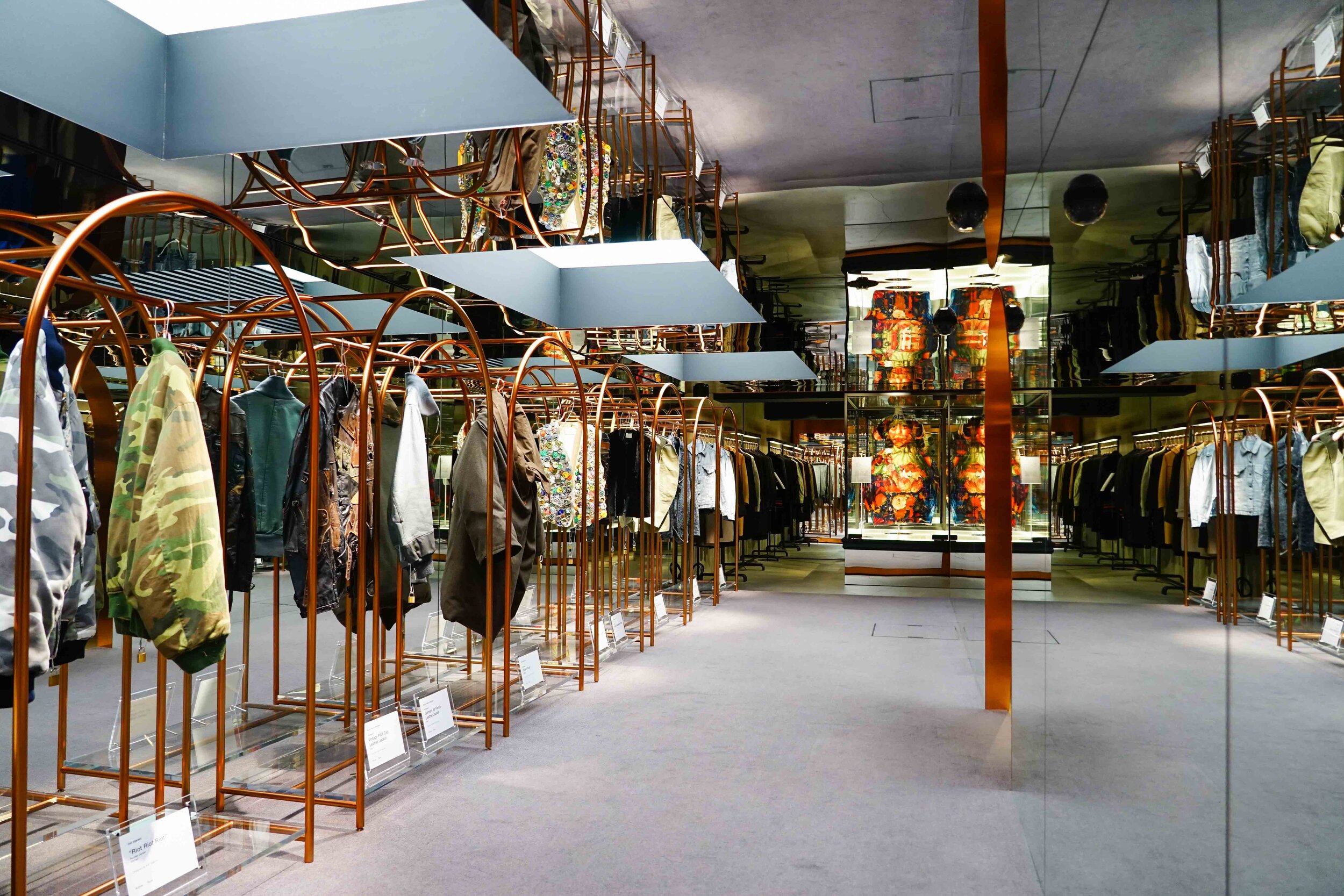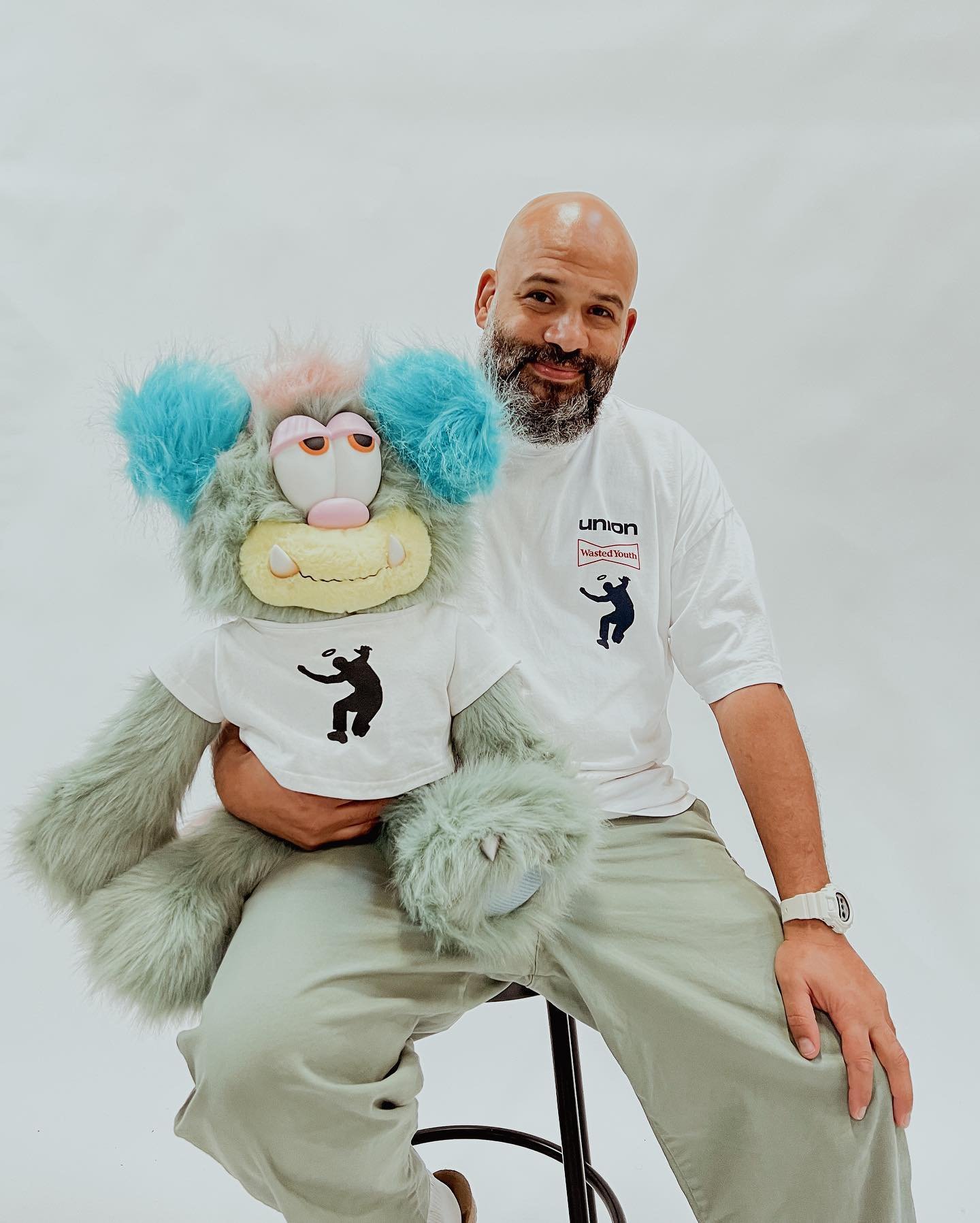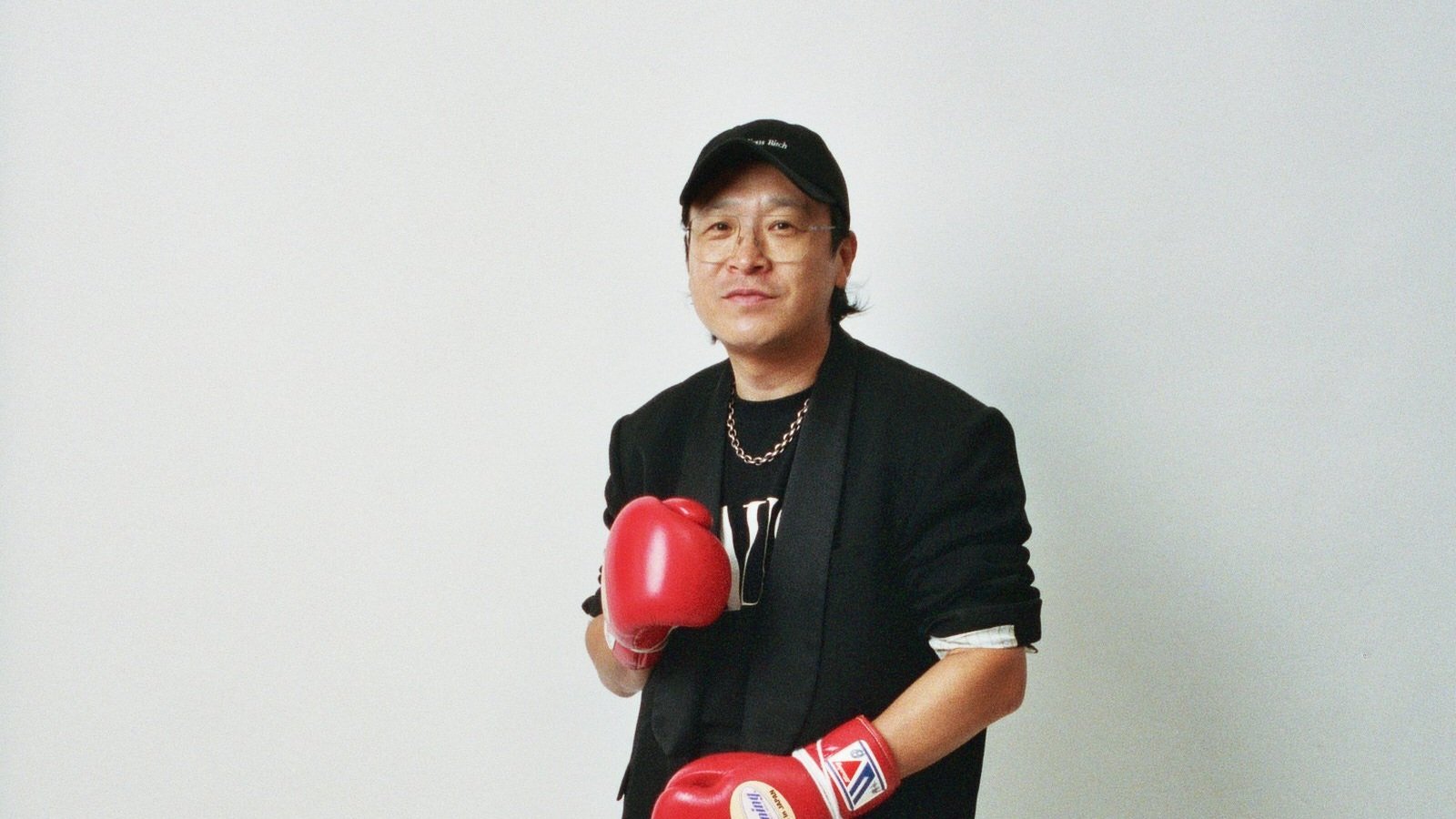Tokyo’s Hidden Grails: ROKU 6 Where the Past Inspires the Present

Ever wonder where fashion designers go shopping?
On a regular street in Nakameguro, there is at first glance an inconspicuous store called Roku 6 based on the 2nd floor of a 3-story business building marked with a slim door with just the number "6" written on it.
The store itself however in contrast to its subtle appearance, is a go-to place for designers ranging from luxury brand in-house design team members to exciting up-and-coming talents.
The lowkey storefront of 6 [roku] in Nakameguro located at 〒153-0042 Tokyo, Meguro City, Aobadai, 1 Chome−27−12 後藤ビル 2F
Roku 6 is able to attract many high-profile customers due to its reputation for having the best curation of items which are selected by the owner and founder of the store, Moose. The store offers a large spectrum of antiques that share the common characteristic of being "extremely rare"; from vintage shooting jackets to early military life vests, spanning old fisherman's gloves to early Issey Miyake archives. Expect the unexpected when entering the store because Roku 6 has it all.
What sets Roku 6 apart from regular vintage stores in Tokyo is its ability to source uncommon items. A large part of the reason why designers, especially, fell in love with the store is that they could conveniently come across clothing samples for their designs when shopping here. In other words, Roku 6 is a vintage store where the past directly inspires the present world of design.
There is a blurred line between sampling and ripping-off in fashion, since most clothes we see nowadays came from silhouettes established in the past, designing based on an existing design is considered acceptable. However, when a brand samples a recent design, there’s a large chance the outcome will be considered a rip-off. To these ends, it makes sense that designers have a good time looking for one-off vintage pieces in Roku 6 for the fact that they can sample them with a low chance of people knowing where the originals are from.
Today, Moose has been running the store for well over 18 years and his curation continues to inspire more and more designers. sabukaru was honored to be able to schedule an interview with the man himself for this article, to discuss the significance of vintage garments and his thought process behind curating one of the best select shop collections out there.
lets start off with the basics, Can you briefly introduce yourself to the Sabukaru readers? How many years has it been since you started Roku 6?
I’m Moose, the owner of Roku 6. It’s been 17 years since I started the store, it has always been here in this building, never moved. Before I started Roku 6, I was working in a vintage store in the US, New York to be specific. 9/11 was the turning point for me, I made up my mind to return to Japan after the incident.
Is there a difference between the vintage culture in the US and Japan? And if so, what do you think is the vital difference?
Yes, there’s a big difference. A fundamental difference lies in the terminologies concerning vintage clothing culture. In America, there’s a deciding difference between “second-hand” and “vintage,” whereas in Japan the terms are not so distinct. In the US, “second hand” refers to affordable vintage clothing, from like Salvation Army and Kilo Shops, there’s not a prominent fashion aspect within those stores. The term “vintage,” when used in contrast to “second hand” or a “used” refers to vintage goods aimed for high-end customers. In Japan, “vintage”, “second hand”, and “vintage” basically mean the same thing, and this is the deciding difference between Japanese and US vintage culture. I prefer the vintage culture in the US.
Do you have any plans on returning to the US?
I wish! Maybe not so soon but I eventually want to start a vintage store in the US. But don’t worry, I have no plans of closing the store in Japan, I’ll try to make ends meet by going back and forth between the 2 countries. I’ll probably have the store located in Brooklyn since I have some friends running vintage stores in that area!
What inspired you to engage in the fashion business in the first place?
I’ve always loved fashion! Back when I was a student, I often bought used clothes since I didn’t have a lot of money, and through constantly buying old clothes, I gradually developed an interest in antique items in general, toys, furniture, camera, music, everything. Out of all my interests, I had the most passion for fashion, so I decided to start a vintage store.
More and more people nowadays are comfortable with buying vintage clothes. and as far as we know, many young people seem to be buying into the style and aesthetic of vintage garments. What do you think accounted for the popularity of vintage apparel?
In my opinion, modern clothes are not as interesting as the clothes in the past. For instance, the 90s witnessed so many novelties in fashion. There was a lot of innovation happening in the fashion industry, a lot of their designs and silhouettes were unprecedented and new. I assume that people who acknowledge this era of fashion would not find the fashion nowadays to be as entertaining, hence today, the ones that are truly into fashion are likely to be looking into the past instead of the future.
True, The 90s are truly amazing are an exciting era filled with some of the most inspiring designs. Do you have a favorite designer in the 90s?
Comme des Garçons in the 90s are amazing. I don’t have anything from the brand, since it don’t necessarily match my style, but I think the designs were absolutely genius. Back in the day, there was a magazine from New York called Visionaire,and they collabed with brands like Hermes, Comme des Garçons, and Dior, producing very expensive but amazing editorials. They’re worth every penny though, I’ll recommend you to look into it.
We were planning to name this article “Where the Past Inspires the Present,” since the store is quite famous for being the place where designers come over for clothing samples and inspirations. What do you think of the title? How does the past inspire the present?
Even back in New York, from time to time we had designers who come over and shop for samples. From that time on, I realized that vintage is truly the root of fashion. I wouldn’t say the designer's name, but there’s this one episode where this famous designer came to the store, bought something, and directly included the item in his/her collection without the slightest adjustment on the design. In other words, the designer just copied it. After some similar incidents that followed, I lost respect for some of the designers. People would buy a 500-dollar designer jacket because they don’t know the designer ripped off the design from a 100-dollar vintage jacket, it’s almost like a magic trick! So the brands I really do respect are the ones who put into the work when it comes to the creational process. Margiela is a good example.
Do have a favorite Martin Margiela Collection?
This is a difficult question… I’ll say that my personal favorites are the men’s Martin Margiela collections around the 2000s. The women’s collections are amazing too, especially the 1998 collection where the “flat garments” were presented, I have the coat from that season. I have quite a collection of early Margiela designs back home. He’s the most creative.
Vintage items usually come with the characteristics of being rare and hard to acquire, in fact, I believe that the “one-off” aspect is big a reason why many customers are so into buying vintage. We assume that for most of the times it is not likely that you’re able to come across the exact same item after you sold it to someone, so we’re wondering if there’s any emotion involved when certain items from your store come and go?
Yeah of course! What’s also interesting is that the items I regard as “this is the only one” or “I’ll never be able to find it again in my life” are usually the items that sell out the fastest. I guess that means that most of my customers have a good sense of fashion [laugh]. I might be a little sad when I let go of some precious items, but at the same time I understand that the happiness of owning a good piece is going to be transferred from me to the new owner, and when I think about that, I’m able to balance my emotions. In fact, I believe that vintage store owners who do not have this emotional attachment to clothes don’t actually love fashion. Maybe they love fashion as a tool for them to make money, but if that’s the case, I doubt if that counts as loving fashion!
I see in the store that there’s military-styled clothing, western, Japanese traditional garments, and many other styles, how would you describe your personal style?
I don’t have any style, and that’s my style. I would wear anything as long as I like it. I prefer not to categorize things. To me, clothes are just like humans, so to speak, categorizing clothes and claiming that you like some and not the others is the same as “racism” among clothes. Imagine me saying I like Americans, and Germans, but not Japanese and Chinese, that’s offensive and it doesn’t quite make sense. If I find someone from China interesting then he’s interesting, if someone from France is cool then I’d be talking to her, even if it's an alien from outer space, I don’t mind hanging out with it as long as it’s chill. To me it’s the same for clothes, when people stop categorizing styles and garments, that’s when the real fun of fashion begins.





